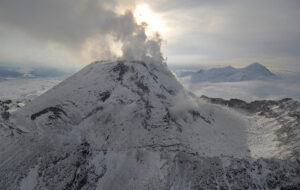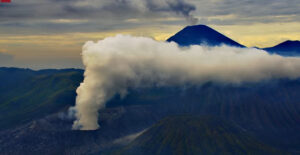Predicting when a volcano will erupt is tricky. Some regions, such as Iceland, monitor volcanoes regularly. But in much of the world, scientific monitoring is unaffordable.
Just look at the trees
A recent study details a new way to check on volcanic activity: just look at the trees. One of the first signs that a volcano is waking up is increased carbon dioxide levels, but this is often difficult to measure directly. As activity ramps up, the volcano produces sulfur dioxide, and the temperature increases.

Yellowstone National Park. Photo: Shutterstock
Both these gases impact plant health. So by monitoring the plants, you can decipher what is happening to the volcano. Carbon dioxide is one of the essential substances for photosynthesis, while sulphur dioxide hampers plant growth.
Researchers analyzed satellite imagery from Yellowstone National Park between 1984 and 2022. A clear pattern was visible.
“We detected signals of increased health from 1984 to 2001,” the authors explained. “One area of the forest that was exposed to volcanic gases was healthier than the nearly identical nearby forests growing without the influence of the volcano.”
When nearby volcanoes first become active, plant growth increases, and the vegetation becomes greener because of the carbon dioxide. But once volcanic activity begins to produce sulfur dioxide, the plants start to turn brown, as the gas and high temperature kills them.

Mount Etna, Italy. Photo: Shutterstock
Not a universal method
This method will not work for every volcano. However, it could be incredibly useful for conical stratovolcanoes with lots of vegetation. Perfect study sites would be Mount Etna in Italy and Tall Volcano in the Philippines. Satellite images of vegetation around these volcanoes could provide warnings of volcanic activity long before changes in gas levels are detected by traditional monitoring techniques.

A man examines a smoking fumarole, or volcanic vent, in Russia’s Kuril Islands. Photo: Jerry Kobalenko






